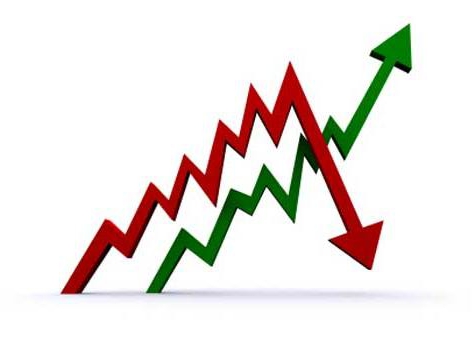The concept of "lost profit" of the Civil Code of the Russian Federation is defined as the unearned income of a person that he could receive if his rights were not violated. This is enshrined in Art. 15, paragraph 1. Next, we analyze in more detail what constitutes lost profit. 
Civil Code of the Russian Federation: general rules
According to them, the size of this alleged damage is equal to the amount by which the property of the victim could expand, but did not expand. This amount is determined not by the content of the contractual obligation, but by the nature of its violation. Simply put, you need to find out what the position of the injured party would be if the terms of the agreement were fully implemented. It is also necessary to establish the amount upon receipt of which the person would be put in the same financial situation as if the obligations had been fulfilled. Real damage and loss of profit are two different concepts. However, they are united by the fact that compensation of both is a way to implement one of the basic principles of civil law, which consists in the ability to compensate for losses.
Features
Lost profits can be expressed in non-profit due to a decrease in production or sales of goods, deterioration in quality, changes in assortment, and so on. However, this should take into account objective factors that may affect the size of the estimated profit. For example, it is impossible not to take into account seasonal changes in prices and volumes of products, exceptional (extraordinary) circumstances, including those that could not affect the fulfillment of the obligation by the debtor, but became the reason for the decrease in the profit of the creditor, etc. 
How to calculate lost profits?
The amount of the alleged damage must be established in accordance with the reasonable costs that the creditor should have incurred in the event of fulfillment of obligations. Thus, the recovery of lost profits in case of short supply of raw materials or components is carried out on the basis of the selling price of the finished product stipulated by the terms of contracts with its consumers, minus the price of goods or materials not received, transportation and procurement costs and other expenses related to the production of finished products. Calculation of lost profits can be carried out in a similar, but somewhat different sense. In accordance with it, with a decrease in production volume or sales of products, unearned income is determined as the difference between the price and the planned total cost of a commodity unit, multiplied by the number of products not sold or not released due to improper behavior of the counterparty.
Unproduced Volume
It is determined in accordance with a specific situation. So, the following options can be used:
- Dividing the quantity of under-delivered (incomplete or inadequate quality) products by the consumption rate per unit of product (service or work) in case there was a short supply.
- Multiplying the daily (hourly) productivity of an idle machine, site, workshop, etc. by the idle time in days (hours).

Other situations
If, when the counterparty improperly fulfills obligations under the contract, the assortment of products is changed, the lost profit in this case is determined as the difference between the amount of the estimated profit from the sale of the intended but not produced products and the amount of income from the sale of the volume produced in exchange. As a result of violation of the terms of the contract, the quality of goods (work or services) may decrease. In this case, the lost profit is determined in accordance with the amount of the price reduction due to the application of discounts, the termination of the payment of the allowance, etc. In case of simultaneous improper performance of obligations by several counterparties, the amount of losses is established for each of them. If this cannot be done, the total amount of harm is distributed equally between them.
List of facts to be proved
In support of their claims, the injured party must provide documents confirming:
- The fact that the defendant violated obligations assumed under the terms of the contract.
- The amount of losses incurred in connection with the unlawful actions of the counterparty. When calculating, it is necessary to take into account the measures taken by the lender and the preparations made, as well as to take into account the availability of valid opportunities for generating income.
- The causal relationship between losses and the fact of violation of a contractual obligation.
- Fulfillment by the creditor of the terms of the agreement.
- Taking reasonable measures to reduce losses. In this case, it is necessary to prove the inability to timely receive similar products from other organizations. This may be due to:
- lack of other sellers of such goods;
- economic inexpediency of the transaction;
- receiving a refusal (written) in the sale of products;
- lack of necessary funds and the ability to attract borrowed capital for the acquisition.

Denial of Requirements
As with real damage, and with loss of profit, each element of harm should be argued by the creditor. A causal link between improper performance of an obligation under the contract and the alleged losses incurred. You should remember one more nuance when determining the lost profit. Judicial practice knows enough cases when the applicant's claim for compensation has been refused.
It is about Art. 393, paragraph 4. This provision indicates that the lender himself must take measures and take actions to obtain the intended profit. That is, the applicant must prove, among other things, that he could and should have received income, and only breaches of obligations on the part of the defendant led to losses, resulting in loss of profit. A statement of claim may be rejected if this rule is ignored. To confirm the availability of real capabilities, you can provide information on the production capacities of the enterprise, on the availability of all prerequisites for the release of products - the availability of the opportunity to obtain raw materials, the required amount of labor resources, and so on.
Loss of profits: judicial practice. Arbitration
During the proceedings in this instance, as a rule, in order to establish the possibility of real sale or release of products, an absence or presence is checked:
- Protocol of Intent.
- The relevant relations recorded in the contract between the applicant and consumers (customers) or the actual possibility of their creation.
- Preliminary Agreements.
- Letters of guarantee from the counterparty with a proposal to draw up an appropriate contract or his positive response to this.

Existing Contradictions
In the works of some domestic lawyers, it is noted that the above position of the court may not always be considered reasonable, since it often contradicts the logic of entrepreneurial activity.In economic terms, it would be more preferable to estimate the lost profit through the profitable rate on invested capital. This method is based on the fact that the enterprise uses circulating and fixed assets to carry out production and business activities. When dividing the value of income by the volume of the first will give the required cost indicator. When comparing the profitable rate on invested capital before violating it, but after committing an unlawful act, as well as after determining the cost indicators, the approximate lost profit is calculated.
Decrease in liability
It is provided for in Art. 404, paragraph 1. The provision says that the court has the right to reduce the amount of liability of the debtor in certain cases. In particular, this is allowed if the creditor, through negligence, either intentionally contributed to an increase in losses that were caused as a result of improper fulfillment or non-fulfillment of contractual conditions, or they did not take reasonable measures to reduce them.
For example, in case of under-delivery of goods in accordance with the contract of sale, the acquiring party must take steps to acquire similar products from a third-party organization. In this case, the seller in case of buyer's refusal to accept the goods must demand its resale. Otherwise, it will be considered that the lost profit was formed as a result of unlawful actions of both the buyer and seller. 
Land Relations
Loss of profit may appear due to temporary or complete withdrawal of a site for public or state needs, restriction of the right to use, deterioration of the soil as a result of activities of citizens, enterprises, institutions. Compensation for lost profits in this case is carried out directly to those who harmed, in the form of a one-time compensation.
Its size will be equal to the income that will be lost during the entire period of land restoration. It is calculated in accordance with the actual production volumes in physical terms over 5 years (on average) and the prices of land at the time of violation of rights. Information from the tax service is used to determine the size of the payment. If necessary, the amount is adjusted in accordance with the current inflation rate.
Special cases
The amount of lost profit is established as a result of multiplying the annual profit by the coefficient given in paragraph 23 of the Resolution of the Council of Ministers. And corresponds to the period of restoration of production, which was violated. This period is determined by the relevant land management project. If the land occupied by fruit and berry bearing plantations has been seized, the loss of profits shall be reimbursed for the entire period, which includes years of harvesting and harvesting in the new plot equal to that achieved in the seized crop. In the event of inconvenience to use the allotment, the unearned profit will be determined as the tenfold difference in the annual expenses for operating the transport after and before the seizure. Along with this, adverse climatic factors, such as floods or droughts, which may occur during periods for which loss of profit is calculated, should be taken into account. 
A special case
In entrepreneurial circulation, a situation may arise in which the seller, in the face of an increase in the price of the goods acting as the subject of the contract, considers that it is more profitable for him to resell the products to a third party, compensating the buyer for the losses. In accordance with domestic standards, in this case, the buyer receives the right to recover from the supplier the difference between the market value and the one specified in the contract twice.
The first refund will be based on the provision of Art. 524. The second time the buyer may demand the recovery of lost profits.At the same time, there may not be any lost profits as such. Thus, it turns out that in an effort to bring domestic standards in line with Western standards, the legislator, in fact, introduces double responsibility. How is loss of profit determined in this case? The formula in this situation is as follows:
HC = DPR = Tsnp - Tsd, Where:
- Tsd - the price under the contract.
- TsNP - the cost at which the products were sold to third parties.
- DPR - seller’s income as a result of violation of the agreement.
- HC - lost profits.



